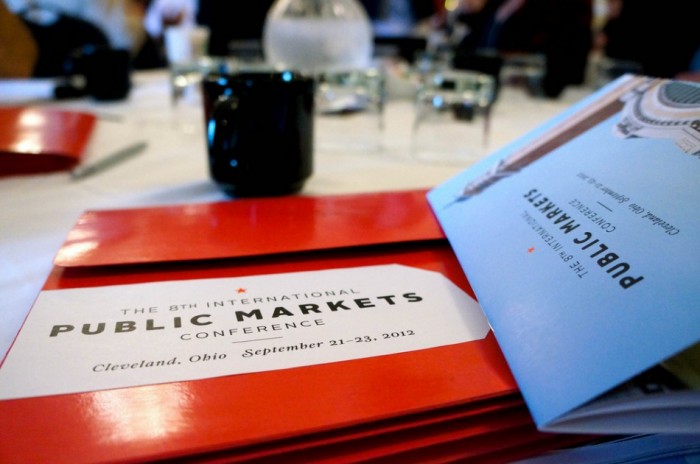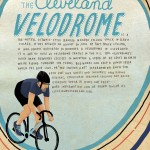Reflections on Market and Place
I spent a lot of time over the last month preparing for the 8th International Public Markets Conference, trying to support Ohio City Inc. with interesting tweets and posts about market and food related news or innovations that caught my eye prior to the conference. As someone who previously did not know much about public or farmers markets beside the obvious, I went into this conference without any preconceived ideas as to what I might encounter. I had a vague idea of the issues surrounding markets and the impacts that they have on the communities around us, but it wasn’t until I attended the Cleveland Connects discussion this past Thursday that I began to see and hear about the actual local impact through the conversation of those experts and influencers of the urban farming and eat local movements here in Cleveland.
One idea in particular caught my attention and stuck with me: markets are not just about the edible impact that they have on a community, but that they are a huge driver in the overall health of the community in which they exist. We may be used to hearing people tell us to eat locally because it is healthier for our bodies, but perhaps we don’t take a lot of time to think about what eating, buying or growing locally does to the health of our places.
To use a bit of jargon, one of the things that markets help to do is to fill food gaps in mainly urban areas, which are referred to as “food deserts.” You can actually look up a map on the USDA’s website that shows where food deserts are around the country. But, one idea that the Projects for Public Spaces, the organization that plans the conference, pointed out was that many times these food deserts are also place deserts. These place deserts refer to places that don’t really have a reason to bring people to them, whether because they are out of the way, or they are in a not-so-nice place. Now, there are a lot of ways to bring people to a place and counteract these place deserts, but markets have the special characteristic of being both physically healthy and good for a community.
So here is a summary of things I learned about health as it relates to markets last week:
1. The Baltimore Food Policy Initiative director talked about her goal “to improve health outcomes by increasing healthy options in food deserts.” In her case, it was not the lack of markets that is the problem, but the lack of healthy food being sold at the markets. As we can see, markets themselves are not the answer in and of themselves. We need to be aware of the effect a market can have on a community, in this case a negative one. Baltimore’s food market culture had to change so that these markets could become the solution instead of the problem. Check them out on the webhttp://www.baltimorecity.gov/Government/AgenciesDepartments/Planning/BaltimoreFoodPolicyInitiative.aspx
2. The Spartenburg Farmers Market is used as an example by many people at Projects for Public Spaces because of the impact the market had on the surrounding area. As in so many places, including Cleveland, the Spartenburg Farmers Market took a place and food desert and transformed it into a hub for both food and people. Though it is on a different scale and in a much different setting than Baltimore, the Spartenburg Farmers Market sought to change their food culture as well. The people of the market saw it as a chance for not only healthy food access, but also as a chance for economic development in an area that previously would not have been able to give back to the community in that way. Here they are on the web: http://www.hubcityfm.org/
3. The last presenter directed several farmers markets in Hawaii that were actually run through the healthcare group Kaiser Permanente. Of course! It makes a lot of sense for a healthcare provider to not only treat those who are sick, but to also promote healthy living! Cleveland is known for its healthcare, mainly the Cleveland Clinic, so I decided to see if the Clinic was doing something similar to Kaiser Permanente and they are! In addition to the four markets that are actually hosted by the Cleveland Clinic, the Clinic also sponsors four other area farmers markets. This is a fantastic example of the relationship between healthy, communities and markets. Here is the link to KP’s farmers market list: https://members.kaiserpermanente.org/redirects/farmersmarkets/ and here is the link to Cleveland Clinic’s farmers market schedule: http://my.clevelandclinic.org/wellness/farmers_market.aspx
So, go check out your local markets. See how they transform the spaces they’re in, or maybe how they create a unique space that would not exist otherwise.









Leave a Reply